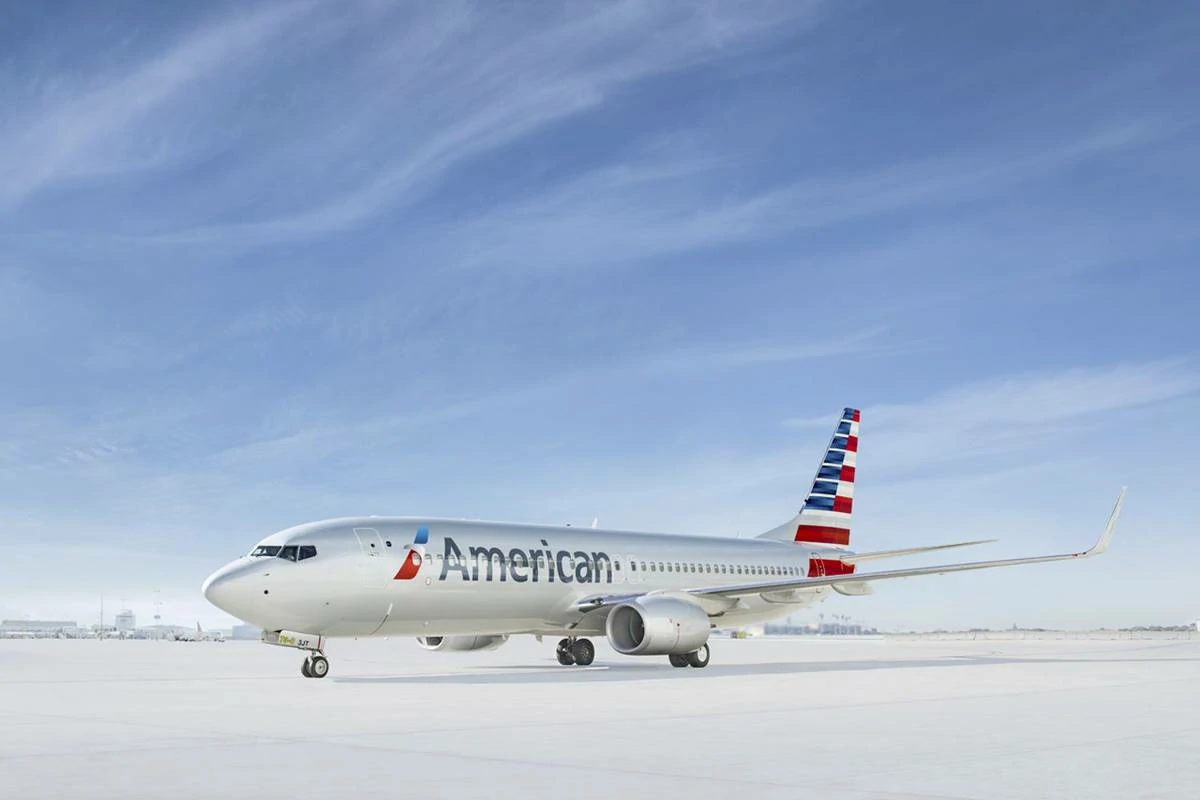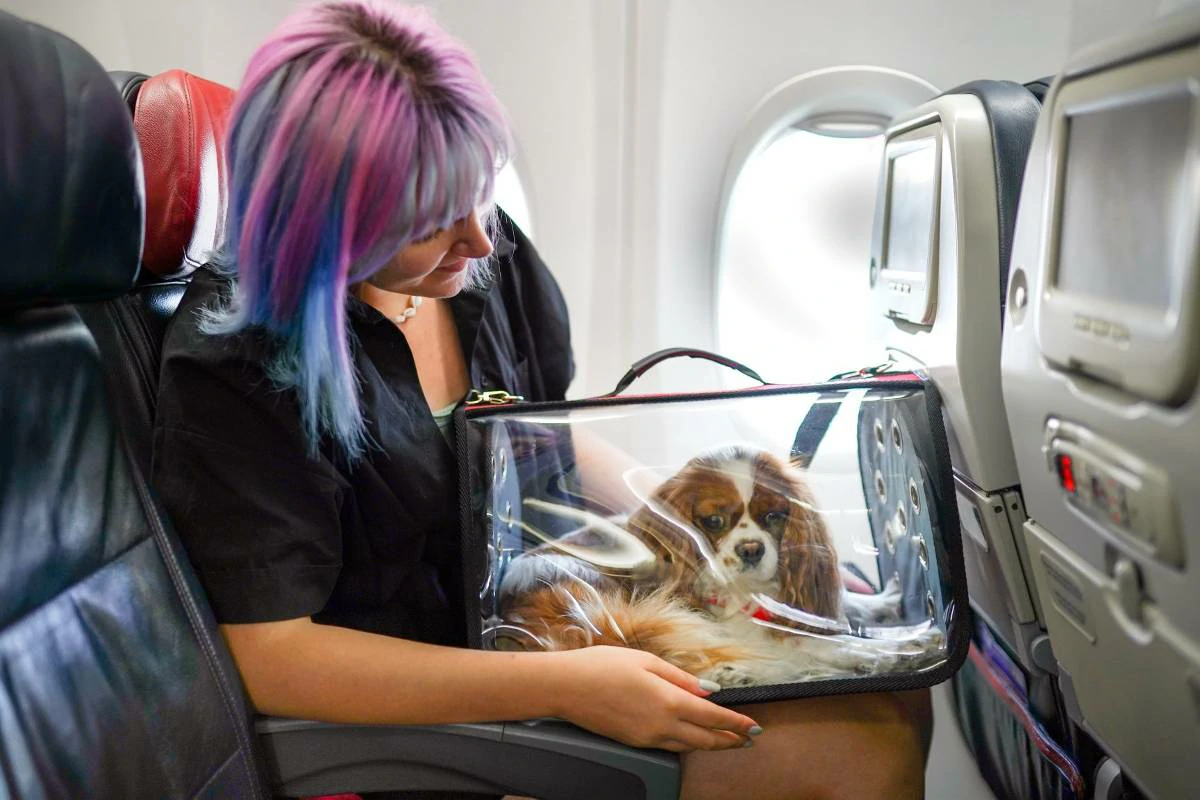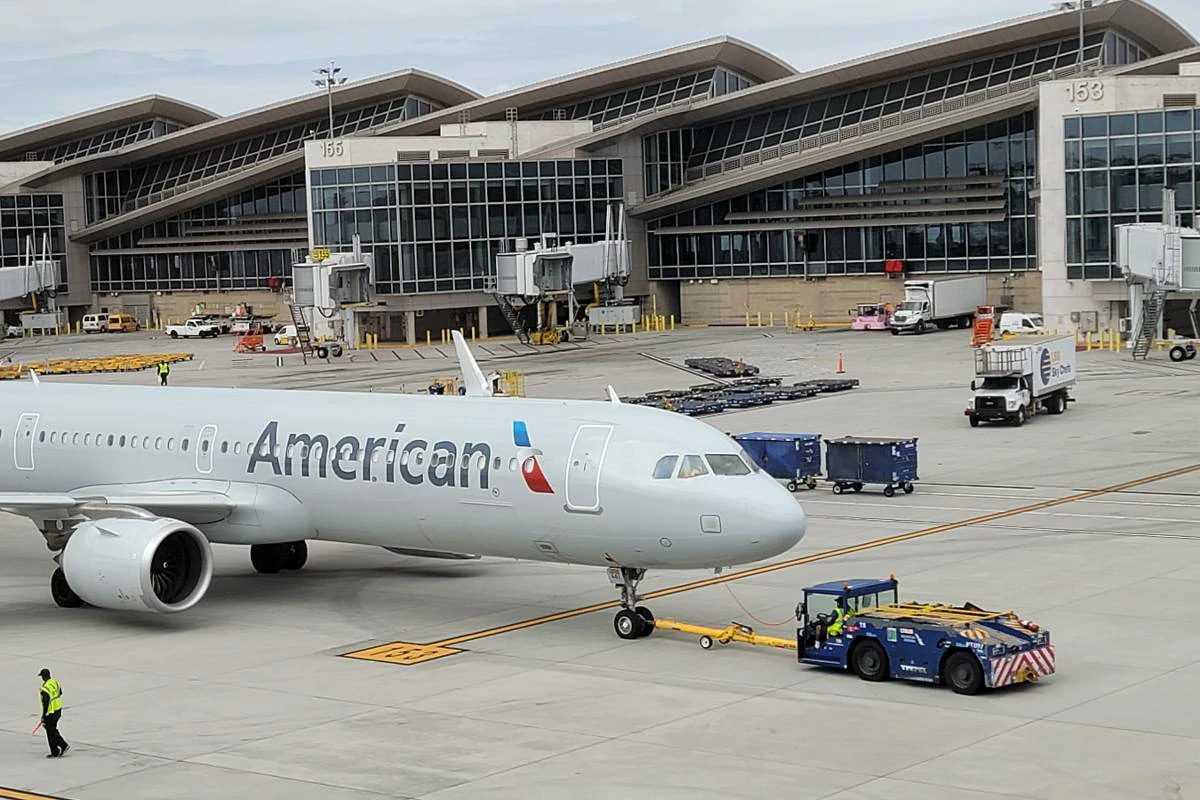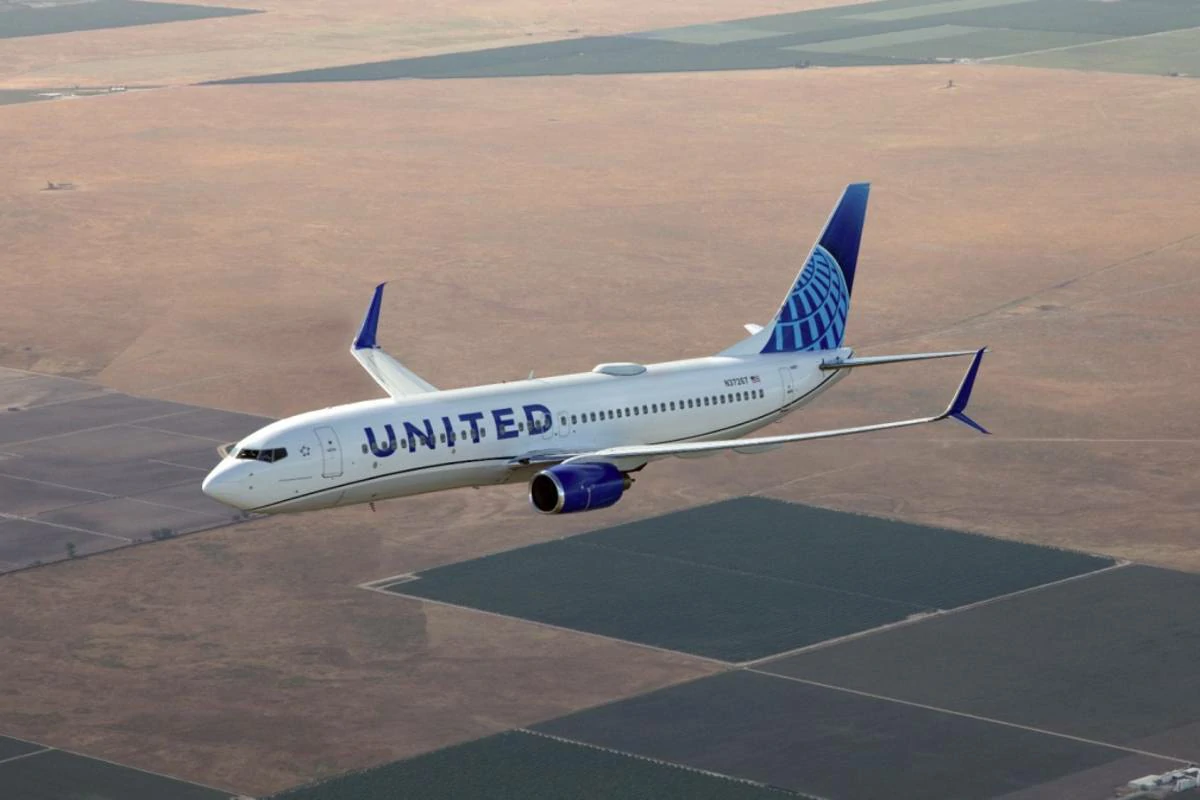American Airlines vs. Delta: Which Is Best? Answer is – Choosing between American Airlines and Delta depends on your individual priorities. Delta is often praised for its superior customer service, reliability, and overall in-flight experience. American Airlines, on the other hand, may appeal to those seeking more affordable fares, a wider range of destinations, and a more generous rewards program.
Summary
- Delta often edges out American Airlines in terms of customer satisfaction, reliability, and overall in-flight experience.
- Delta is frequently commended for its superior customer service.
- Delta has a stronger track record of on-time arrivals and fewer cancellations.
- Delta’s cabins and seats are generally considered to be more comfortable and modern.
- American Airlines tends to offer more affordable fares.
- American Airlines serves a wider range of destinations.
- American Airlines’ AAdvantage program is known for its generous rewards and ease of earning elite status.
American Airlines vs. Delta: Which Is Best?
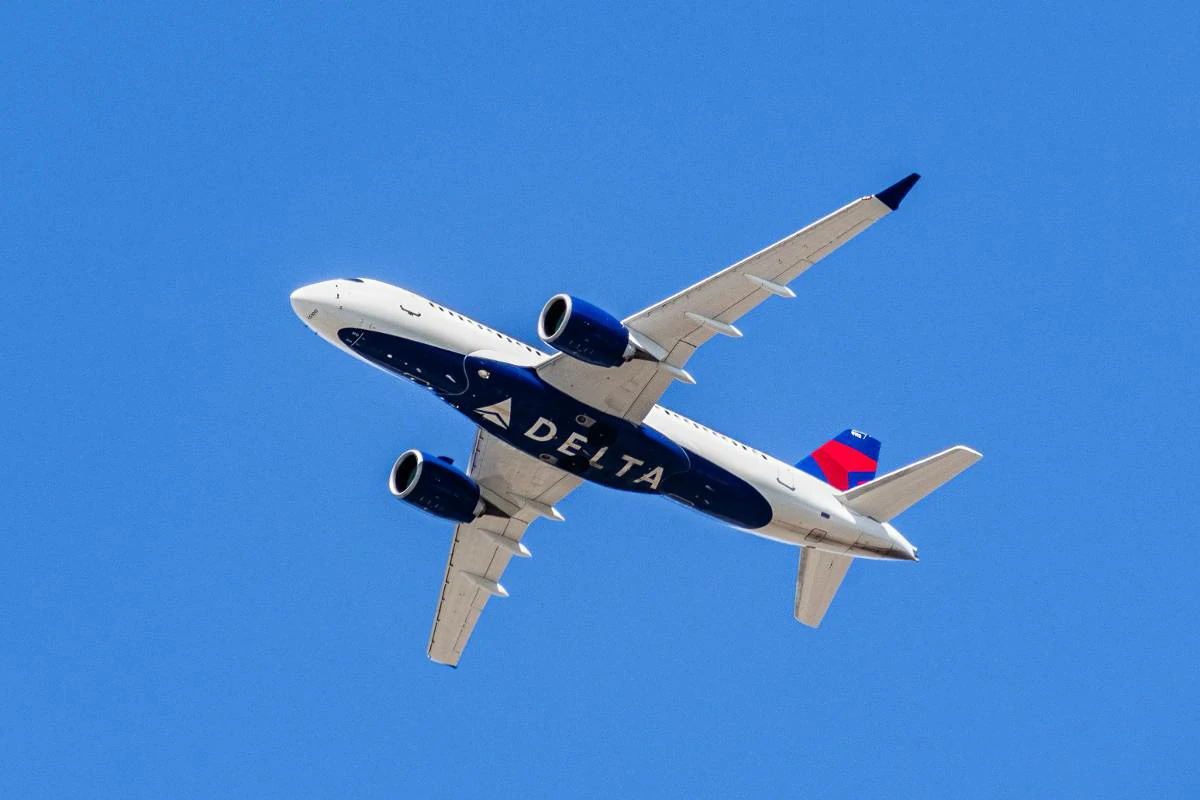
American Airlines and Delta Air Lines are two of the largest and most well-known airlines in the United States, each with a rich history and extensive global network.
American Airlines, founded in 1930, is a legacy carrier with headquarters in Fort Worth, Texas. It is a founding member of the Oneworld alliance and boasts a vast network covering over 350 destinations in 50 countries. American Airlines is known for its extensive domestic network, particularly strong in the eastern and central United States, and offers a wide range of fare options, from Basic Economy to Flagship First.
Delta Air Lines, established in 1924, is headquartered in Atlanta, Georgia. It is a founding member of the SkyTeam alliance and operates a network spanning more than 300 destinations in over 50 countries. Delta is recognized for its strong presence in the southern and eastern United States, its emphasis on customer service, and its consistent investment in onboard amenities and technology.
The Importance of Choosing the Right Airline
Selecting the right airline can significantly impact your travel experience. Factors like on-time performance, customer service, in-flight amenities, baggage fees, and rewards programs can all contribute to the overall satisfaction of your journey.
Henry Harteveldt Expert Opinion
According to Henry Harteveldt, a travel industry analyst and president of Atmosphere Research Group, “Choosing the right airline is crucial for travelers, as it can make the difference between a smooth, enjoyable journey and a stressful, frustrating one.”
Key Factors in Airline Comparison
1. Customer Service and Satisfaction
Customer service is a critical aspect of any travel experience. From booking flights to handling baggage issues, the level of support and assistance provided by an airline can significantly influence your overall satisfaction.
Delta Air Lines has consistently been recognized for its superior customer service. In the J.D. Power 2023 North America Airline Satisfaction Study, Delta ranked highest among traditional carriers, receiving praise for its reservation process, check-in experience, and baggage handling. The airline’s commitment to customer satisfaction is also evident in its responsiveness to feedback and complaints.
American Airlines, while making strides in improving its customer service, has historically lagged behind Delta in this area. However, the airline has been investing in new initiatives, such as enhancing its mobile app and expanding its customer support channels, to address these concerns.
Brett Snyder Expert Opinion
“Delta’s focus on customer service is a key differentiator in the airline industry,” says Brett Snyder, a former airline employee and founder of the Cranky Flier blog. “The airline has a strong track record of going above and beyond for its passengers, which has earned it a loyal following.”
2. Reliability and On-Time Performance
The reliability of an airline, measured by its on-time performance and frequency of cancellations, is a crucial factor for travelers who value punctuality and efficiency.
According to the Bureau of Transportation Statistics (BTS), Delta Air Lines consistently outperforms American Airlines in terms of on-time arrivals and cancellations. In 2023, Delta achieved an on-time arrival rate of 81.16%, compared to American Airlines’ 77.33%. Additionally, Delta had a cancellation rate of 0.61%, while American Airlines had a higher cancellation rate of 1.65%.
These statistics suggest that Delta is a more reliable choice for travelers who prioritize punctuality and want to minimize the risk of delays or cancellations.
3. In-Flight Experience and Amenities
The in-flight experience, encompassing seat comfort, cabin amenities, entertainment options, and food and beverage offerings, can significantly impact the overall enjoyment of your journey.
Delta Air Lines is known for its investment in the in-flight experience. The airline offers comfortable seats with ample legroom, even in economy class, and many of its aircraft are equipped with seatback entertainment systems, Wi-Fi connectivity, and power outlets. Delta also partners with renowned chefs to curate its in-flight meals and offers a wide selection of complimentary beverages.
American Airlines has also been making efforts to enhance its in-flight experience. The airline has introduced new cabin designs with modern seats and improved amenities, and it has expanded its in-flight entertainment options. However, some travelers still find American Airlines’ in-flight experience to be less consistent than Delta’s, particularly on older aircraft.
Zach Griff Expert Opinion
“Delta has set the standard for in-flight experience among U.S. airlines,” says Zach Griff, senior reporter at The Points Guy. “The airline’s commitment to providing a comfortable and enjoyable journey is evident in its attention to detail, from seat design to food and beverage offerings.”
4. Fare Pricing and Affordability
Price is often a significant deciding factor when choosing an airline, especially for budget-conscious travelers. While fare prices can fluctuate based on various factors such as demand, seasonality, and booking time, some general trends can be observed between American Airlines and Delta.
Historically, American Airlines has tended to offer slightly lower fares than Delta, particularly for domestic flights. This can be attributed in part to American’s larger fleet and broader network, which allows for greater operational efficiency and cost savings. However, Delta has also been known to offer competitive fares, especially for flights originating from its hub cities.
5. Destinations and Route Networks
The breadth and depth of an airline’s route network can be a crucial consideration for frequent travelers or those with specific destination needs.
American Airlines boasts a more extensive route network than Delta, serving over 350 destinations in 50 countries. This includes a strong presence in the Caribbean, Latin America, and Asia. Additionally, American Airlines’ membership in the Oneworld alliance provides access to an even wider network of partner airlines.
Delta Air Lines, while having a smaller overall network, still offers a substantial reach, with over 300 destinations in 50 countries. Delta’s network is particularly strong in Europe, thanks to its partnerships with Air France-KLM and Virgin Atlantic. The airline’s membership in the SkyTeam alliance further expands its global reach.
6. Rewards Programs and Loyalty Benefits
Airline rewards programs can offer significant value to frequent flyers, providing benefits like free flights, upgrades, priority boarding, and access to airport lounges.
American Airlines’ AAdvantage program is known for its generous mileage accrual rates and extensive network of partners, which includes hotels, car rental companies, and retailers. AAdvantage members can earn miles through flights, credit card spending, and other activities, and they can redeem those miles for various travel and lifestyle rewards.
Delta’s SkyMiles program is also highly regarded, offering a wide array of redemption options and the flexibility to use miles for flights, upgrades, and other travel-related expenses. SkyMiles members can also enjoy benefits like priority check-in, boarding, and baggage handling.
7. Travel Rewards Credit Cards
Airline-branded credit cards can be a valuable tool for maximizing your travel rewards. These cards often offer sign-up bonuses, bonus miles for airline spending, and additional perks like priority boarding and free checked bags.
Both American Airlines and Delta offer co-branded credit cards with various banks and financial institutions. These cards cater to different spending patterns and travel needs, so it’s important to compare their features and benefits to find the one that best suits your lifestyle.
Julian Kheel Expert Opinion
“Airline credit cards can be a great way to accelerate your mileage earnings and unlock valuable travel benefits,” says Julian Kheel, a travel expert and founder of the blog The Points Guy. “However, it’s important to choose a card that aligns with your spending habits and travel goals.”
American Airlines
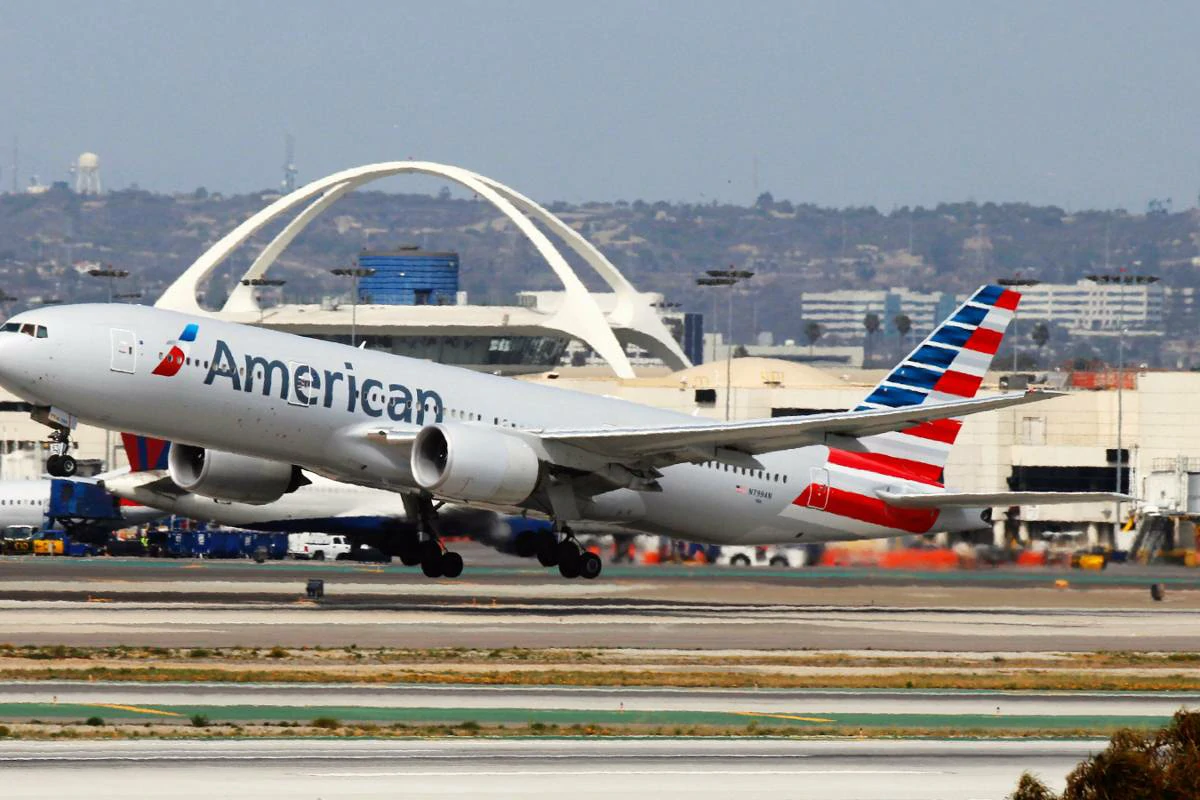
1. History and Background
American Airlines, a titan in the aviation industry, traces its roots back to 1930 as a conglomeration of 82 smaller airlines. Over the decades, through mergers and acquisitions, American Airlines solidified its position as a major player. Notably, its merger with US Airways in 2013 made it the largest airline globally at the time.
The airline’s headquarters is in Fort Worth, Texas, and it is a founding member of the oneworld alliance. This alliance allows American Airlines passengers to access a vast global network, earning and redeeming miles on partner airlines like British Airways, Cathay Pacific, and Qantas.
2. Strengths and Weaknesses
American Airlines has several strengths that attract travelers. Their expansive route network is a major advantage, offering flights to hundreds of destinations worldwide. This makes them a convenient choice for both domestic and international travel. Additionally, their AAdvantage frequent flyer program is popular for its generous earning opportunities and diverse redemption options.
However, American Airlines also faces some challenges. They have faced criticism for inconsistent customer service and have sometimes struggled with operational efficiency, leading to delays and cancellations. While they have been working to improve these areas, it’s important for travelers to consider these factors when choosing their airline.
Samuel Engel Expert Opinion
Aviation consultant Samuel Engel notes, “American’s vast network is a significant strength, but they need to ensure that their operational reliability matches the expectations of their passengers.”
3. Hubs and Focus Cities
American Airlines operates from several key hubs across the United States, with each offering a unique advantage:
- Dallas/Fort Worth International Airport (DFW): This is American’s largest hub, providing numerous connections across the country and internationally.
- Charlotte Douglas International Airport (CLT): Known for its efficient operations and strong connections to the eastern United States.
- Chicago O’Hare International Airport (PWK): A major gateway to the Midwest and beyond, with a wide array of international destinations.
- Philadelphia International Airport (PHL): A key hub for the Northeast Corridor and transatlantic flights.
In addition to these hubs, American Airlines also maintains focus cities, which serve as secondary bases for the airline:
- Los Angeles International Airport (LAX): A major hub for West Coast travel and transpacific flights.
- Miami International Airport (MIA): A gateway to the Caribbean and Latin America.
- New York City (LGA and JFK): Offering comprehensive service to the New York metropolitan area.
4. Fleet and Aircraft Types
American Airlines operates a diverse fleet of aircraft, ranging from narrow-body jets for short-haul flights to wide-body aircraft for long-haul international routes. The airline’s fleet primarily consists of Boeing and Airbus models, including:
Airbus A319, A320, A321, A321neo: These narrow-body aircraft are commonly used for domestic and short-haul international flights. They offer comfortable seating and modern amenities like in-flight entertainment and Wi-Fi.
Boeing 737-800, 737 MAX: These popular narrow-body jets are also used for short- to medium-haul routes. The 737 MAX, in particular, boasts improved fuel efficiency and a quieter cabin.
Boeing 777-200, 777-300ER:These wide-body aircraft are deployed on long-haul international routes, offering premium cabin options like Flagship Business and Flagship First.
Boeing 787 Dreamliner:This state-of-the-art wide-body aircraft is known for its fuel efficiency, spacious cabin, and large windows. American Airlines uses the 787 on various international routes.
5. Cabin Classes and Seat Options
American Airlines offers various cabin classes to cater to different travel needs and budgets:
Basic Economy: This is the most affordable option, but it comes with restrictions like no seat selection and limited baggage allowance.
Main Cabin: The standard economy class offers comfortable seating and basic amenities.
Main Cabin Extra: This upgraded economy class provides extra legroom and early boarding privileges.
Premium Economy: Available on select international flights, this class offers more spacious seating, enhanced amenities, and a dedicated check-in area.
Flagship Business: This premium class features lie-flat seats, gourmet dining, and access to exclusive airport lounges.
Flagship First: The most luxurious option, available on select international flights, offers private suites, personalized service, and top-tier amenities.
Each cabin class has different seat options, ranging from standard seats to lie-flat beds. Passengers can choose their preferred seat during booking or at check-in, depending on availability and fare class.
6. AAdvantage Rewards Program
American Airlines’ AAdvantage loyalty program is one of the most popular in the industry. It allows members to earn miles through flights, hotel stays, car rentals, credit card spending, and other activities. These miles can then be redeemed for flights, upgrades, hotel stays, and other rewards.
AAdvantage members can also achieve elite status by accumulating a certain number of miles or flight segments within a calendar year. Elite status members enjoy benefits like priority boarding, free checked bags, and access to airport lounges.
Gary Leff Expert Opinion
According to Gary Leff, a travel expert and founder of the blog View from the Wing, “American Airlines’ AAdvantage program is a great option for frequent flyers who value flexibility and a wide range of redemption options.”
7. Co-Branded Credit Cards
American Airlines partners with several banks to offer co-branded credit cards that allow cardholders to earn AAdvantage miles on everyday spending.
These cards often come with additional benefits like sign-up bonuses, priority boarding, and free checked bags.
Some popular American Airlines co-branded credit cards include:
- Citi® / AAdvantage® Platinum Select® World Elite Mastercard®
- AAdvantage® Aviator® Red World Elite Mastercard®
- Barclays AAdvantage® Aviator® Silver Mastercard®
Delta Air Lines
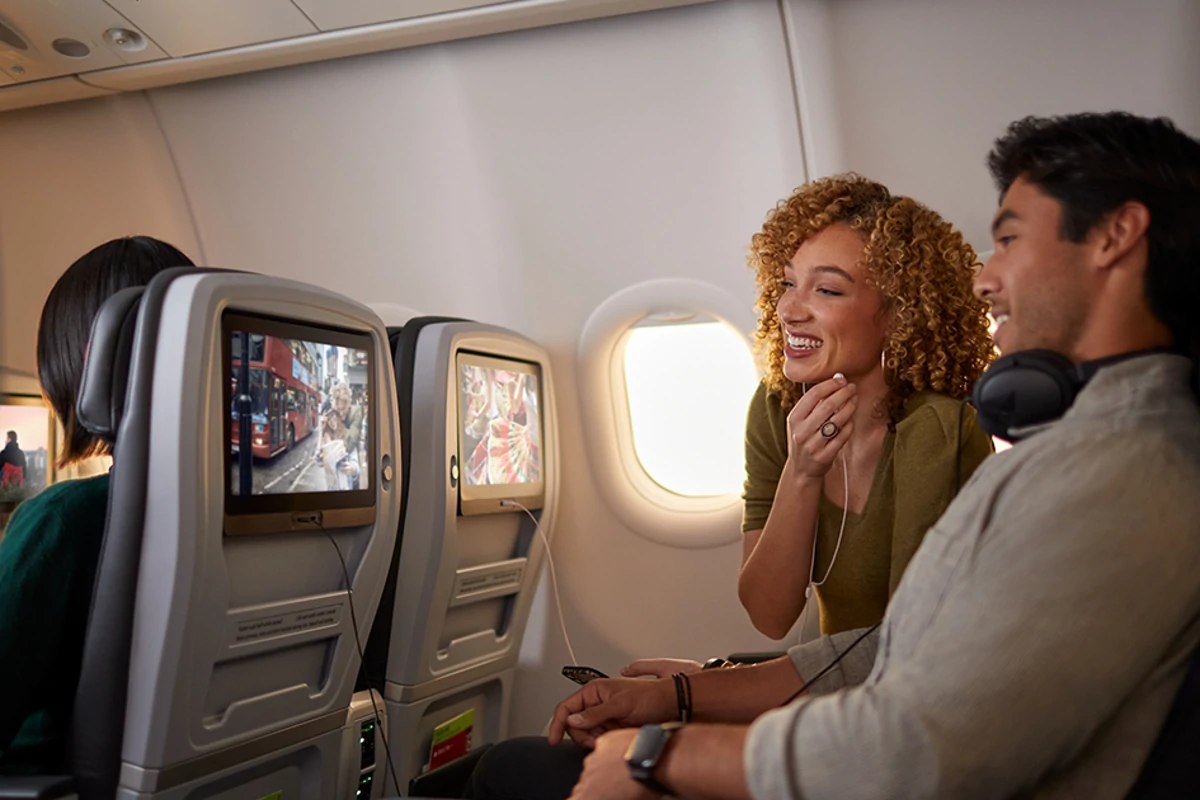
1. History and Background
Delta Air Lines, a name synonymous with air travel, has a history that dates back to 1924. It began as Huff Daland Dusters, a crop-dusting operation in Macon, Georgia, before transitioning to passenger service in 1929.
Delta’s initial focus was on regional routes in the southeastern United States, but over the years, it expanded significantly through mergers and acquisitions, ultimately becoming a global carrier.
A pivotal moment in Delta’s history was its merger with Northwest Airlines in 2008, which made it the largest airline in the world at the time. This merger expanded Delta’s global reach and solidified its position as a major player in the aviation industry.
Delta’s headquarters is in Atlanta, Georgia, and it is a founding member of the SkyTeam alliance, which includes airlines like Air France, KLM, and Korean Air.
2. Strengths and Weaknesses
Delta Air Lines is renowned for its exceptional customer service, consistently ranking high in customer satisfaction surveys. The airline is also known for its operational reliability, with a strong track record of on-time performance and fewer cancellations compared to its competitors.
Delta’s investment in its fleet, with a focus on modern aircraft and onboard amenities, has further enhanced its reputation for providing a comfortable and enjoyable travel experience.
However, like any airline, Delta has its weaknesses. It has faced criticism for its complex fare structure, which can sometimes make it difficult for travelers to find the best deals. Additionally, Delta’s SkyMiles frequent flyer program has undergone several devaluations in recent years, leading to frustration among some members.
Henry Harteveldt Expert Opinion
Henry Harteveldt, president of Atmosphere Research Group, a travel industry analysis firm, states, “Delta has consistently demonstrated a strong commitment to customer service and operational excellence. However, it is important for the airline to address concerns about fare transparency and maintain the value proposition of its frequent flyer program.”
3. Hubs and Focus Cities
Delta Air Lines operates a network of hubs and focus cities strategically located across the United States and around the world.
These hubs serve as central points for connecting flights, providing passengers with convenient access to a wide range of destinations.
Delta’s primary hubs include:
- Atlanta Hartsfield-Jackson International Airport (ATL): The world’s busiest airport and Delta’s largest hub, offering extensive domestic and international connections.
- Detroit Metropolitan Wayne County Airport (DTW): A major hub for both domestic and international travel, especially for flights to and from Asia.
- Minneapolis-Saint Paul International Airport (MSP): A key hub for domestic and international flights, particularly to and from Europe.
- Salt Lake City International Airport (SLC): A growing hub for Delta, offering numerous connections to the western United States and international destinations.
In addition to these hubs, Delta also operates several focus cities, which are secondary bases for the airline. These focus cities include:
- New York City (JFK and LGA): Offering comprehensive service to the New York metropolitan area.
- Los Angeles International Airport (LAX): A major hub for West Coast travel and transpacific flights.
- Seattle-Tacoma International Airport (SEA): A growing gateway to the Pacific Northwest and Asia.
4. Fleet and Aircraft Types
Delta Air Lines boasts a diverse and extensive fleet, composed primarily of Airbus and Boeing aircraft.
With one of the largest fleets in the world, Delta strategically deploys different aircraft types to cater to varying route lengths and passenger demands. Their fleet includes:
- Airbus A220: This modern, fuel-efficient narrow-body jet is primarily used for short-haul domestic routes and select international destinations. Passengers enjoy a comfortable cabin with larger windows and improved overhead bin space.
- Airbus A320 Family: The A319, A320, and A321 are workhorses of Delta’s fleet, commonly found on domestic and short-haul international flights. These aircraft offer reliable performance and a consistent passenger experience.
- Airbus A330, A330neo, A350: These wide-body aircraft are deployed on long-haul international routes, providing a spacious and comfortable experience with premium cabin options like Delta One suites and Delta Premium Select.
- Boeing 737, 757, 767: These Boeing models are also utilized across Delta’s network, with the 737 primarily serving domestic routes and the 757 and 767 handling both domestic and international destinations.
- Boeing 717: This regional jet is used for shorter flights and offers a comfortable experience with its all-leather seating.
Delta continues to invest in modernizing its fleet, focusing on fuel efficiency and passenger comfort. The airline has placed significant orders for new aircraft, including the state-of-the-art Airbus A321neo and the Boeing 737 MAX.
5. Cabin Classes and Seat Options
Delta Air Lines offers a variety of cabin classes to suit different travel preferences and budgets:
Basic Economy: The most economical option, it comes with restrictions like no seat assignments until check-in and no changes allowed.
Main Cabin: The standard economy class offers comfortable seating and essential amenities.
Comfort+: An upgraded economy class with extra legroom, dedicated overhead bin space, and Sky Priority boarding.
Premium Select: Available on select international flights, this class offers wider seats, additional legroom, an amenity kit, and enhanced meal service.
Delta One: Delta’s business class cabin features lie-flat seats, premium dining, and Sky Club lounge access.
Delta Premium Select: This premium economy class offers wider seats, additional legroom, an amenity kit, and enhanced meal service.
6. SkyMiles Rewards Program
Delta’s SkyMiles frequent flyer program is one of the most popular loyalty programs in the airline industry. Members can earn miles by flying with Delta, its partner airlines, or through everyday spending with Delta SkyMiles credit cards. These miles can then be redeemed for flights, upgrades, hotel stays, car rentals, and other rewards.
SkyMiles members can also achieve Medallion Status, a tier-based program with four levels: Silver, Gold, Platinum, and Diamond. Each level offers progressively more valuable benefits, such as priority boarding, free checked bags, complimentary upgrades, and access to Delta Sky Clubs.
Zach Griff Expert Opinion
Zach Griff, senior reporter at The Points Guy, notes, “Delta’s SkyMiles program offers a wide range of redemption options, from award flights to merchandise. The program’s flexibility and diverse partner network make it an attractive choice for frequent travelers.”
7. Co-Branded Credit Cards
Delta Air Lines partners with American Express to offer a range of co-branded credit cards that allow cardholders to earn SkyMiles on everyday purchases.
These cards come with various benefits, such as welcome bonuses, bonus miles for Delta purchases, priority boarding, and free checked bags.
Some popular Delta SkyMiles credit cards include:
- Delta SkyMiles® Gold American Express Card
- Delta SkyMiles® Platinum American Express Card
- Delta SkyMiles® Reserve American Express Card
Head-to-Head Comparison
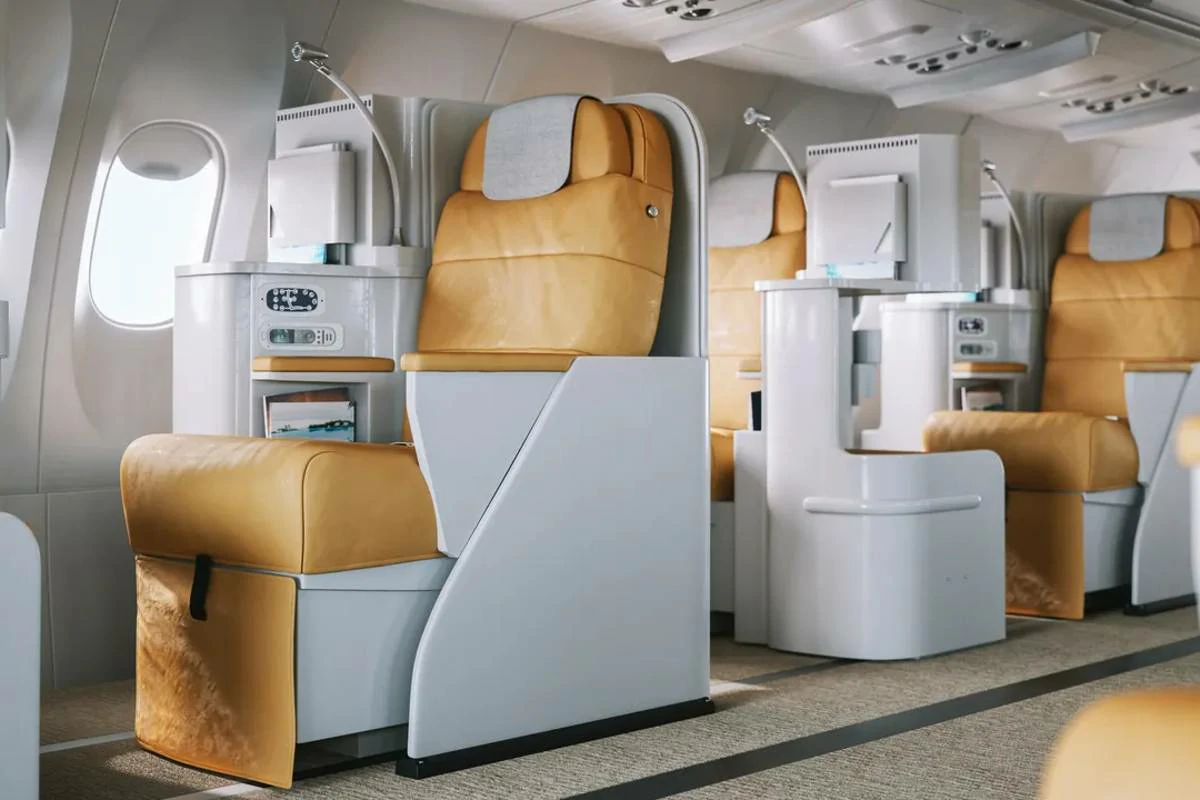
1. Customer Service: American vs. Delta
Customer service is a critical factor for travelers as it can greatly influence the overall travel experience. Both American Airlines and Delta strive to provide excellent customer service, but there are notable differences in their approaches and performance.
| Feature | American Airlines | Delta Air Lines |
|---|---|---|
| Reputation | Historically, American Airlines has received mixed reviews for customer service, with some passengers reporting inconsistencies in interactions with staff. | Delta consistently ranks high in customer satisfaction surveys and is known for its friendly and helpful staff, both on the ground and in the air. |
| Responsiveness | American Airlines has made efforts to improve its responsiveness to customer inquiries and complaints through various channels, including phone, email, and social media. | Delta is often praised for its prompt and efficient responses to customer concerns, offering support through multiple channels and dedicated customer service lines. |
| Accessibility | American Airlines provides customer support through various channels, including phone, email, social media, and its mobile app. | Delta offers similar support channels, with the added benefit of Delta Sky Assist, a dedicated Twitter handle for real-time customer service assistance. |
| Problem Resolution | American Airlines aims to resolve customer issues promptly and efficiently, but the effectiveness can vary depending on the complexity of the problem and the specific staff member. | Delta is known for its proactive approach to problem-solving, often going the extra mile to ensure customer satisfaction and address issues quickly and effectively. |
| Overall Satisfaction | American Airlines has been working to improve its customer service and has seen some positive results, but it still lags behind Delta in overall customer satisfaction ratings. | Delta consistently receives high marks for its customer service, with passengers often citing its friendly and helpful staff as a major reason for their satisfaction with the airline. |
2. Reliability: American vs. Delta
Reliability is a key concern for travelers who value punctuality and depend on their flights arriving on time. Both American Airlines and Delta prioritize on-time performance, but their track records show some differences.
| Feature | American Airlines | Delta Air Lines |
|---|---|---|
| On-Time Performance | According to the Bureau of Transportation Statistics (BTS), American Airlines’ on-time arrival rate for 2023 was 77.33%, meaning that approximately 77% of their flights arrived at their destinations on time. | Delta Air Lines boasts a superior on-time arrival rate of 81.16% for 2023, indicating that their flights are more likely to arrive as scheduled compared to American Airlines. |
| Cancellations | American Airlines had a cancellation rate of 1.65% in 2023, meaning that approximately 1.65% of their scheduled flights were canceled due to various reasons. | Delta Air Lines demonstrates a lower cancellation rate of 0.61% in 2023, suggesting that their flights are less likely to be canceled compared to American Airlines. |
| Overall Reliability | While American Airlines has made efforts to improve its reliability, its performance still lags behind Delta. | Delta Air Lines is considered one of the most reliable airlines in the United States, with a strong track record of on-time arrivals and minimal cancellations. |
| Factors Affecting Reliability | Several factors can influence an airline’s reliability, including weather conditions, air traffic control delays, maintenance issues, and crew scheduling problems. Both American Airlines and Delta are susceptible to these factors. | Delta’s operational efficiency and proactive measures to mitigate potential disruptions contribute to its higher reliability compared to American Airlines. |
| Passenger Impact | Flight delays and cancellations can cause significant inconvenience and disruptions to passengers’ travel plans. | Delta’s superior reliability translates to a more predictable and smoother travel experience for passengers, minimizing the risk of delays and cancellations. |
3. In-Flight Experience: American vs. Delta
The in-flight experience encompasses various aspects that can make a flight enjoyable or unpleasant, such as seat comfort, entertainment options, Wi-Fi availability, and food and beverage offerings. Both American Airlines and Delta invest in their in-flight experience, but there are differences in their offerings and priorities.
| Feature | American Airlines | Delta Air Lines |
|---|---|---|
| Seat Comfort | American Airlines offers a variety of seat options across its cabin classes, including Main Cabin, Main Cabin Extra, Premium Economy, Flagship Business, and Flagship First. | Delta also provides different seat options, including Main Cabin, Comfort+, Premium Select, and Delta One. |
| Entertainment | American Airlines offers seatback entertainment systems on most of its aircraft, with a selection of movies, TV shows, music, and games. | Delta boasts a wide range of in-flight entertainment options, including seatback screens with movies, TV shows, music, games, and live TV on select flights. |
| Wi-Fi | American Airlines offers Wi-Fi on most of its flights for a fee, with different pricing options depending on the duration and speed. | Delta provides free messaging through iMessage, Facebook Messenger, and WhatsApp on all Wi-Fi-enabled flights, while high-speed Wi-Fi is available for purchase. |
| Food and Beverage | American Airlines offers complimentary snacks and beverages in Main Cabin, while premium cabins enjoy enhanced meal service. | Delta’s in-flight dining includes complimentary snacks and beverages in Main Cabin, while premium cabins receive chef-curated meals and a wider selection of beverages. |
| Overall Experience | American Airlines’ in-flight experience can vary depending on the aircraft type and cabin class. | Delta is often praised for its consistent and high-quality in-flight experience across its fleet and cabin classes. |
Jason Rabinowitz Expert Opinion
Jason Rabinowitz, an aviation journalist and author, notes, “Delta’s investment in its in-flight experience, including seat comfort, entertainment, and dining, has set a high bar for the industry. While American Airlines has made strides in improving its offerings, it still has some catching up to do in terms of consistency and overall passenger satisfaction.”
4. Fare Prices: American vs. Delta
Airfare is often a significant factor when choosing an airline, especially for budget-minded travelers. Both American Airlines and Delta offer a range of fares, but their pricing structures and strategies differ, which can lead to variations in prices for similar routes.
| Feature | American Airlines | Delta Air Lines |
|---|---|---|
| Pricing Structure | American Airlines typically offers a wider range of fares, including Basic Economy, Main Cabin, Main Cabin Extra, and more. | Delta’s fare structure is generally less complex, with options like Basic Economy, Main Cabin, Comfort+, and Premium Select. |
| Domestic Fares | American Airlines often has lower base fares for domestic flights compared to Delta. | Delta’s domestic fares tend to be slightly higher than American’s, but they may offer more bundled options with additional benefits. |
| International Fares | American Airlines may have competitive fares for certain international routes, particularly to destinations in Latin America and the Caribbean. | Delta often has competitive fares for flights to Europe and Asia, due to its strong partnerships with airlines in those regions. |
| Sales and Promotions | Both airlines frequently offer sales and promotions, so it’s worth checking their websites or signing up for email alerts to stay informed about potential discounts. | Delta’s “SkyMiles Flash Sales” are popular among frequent flyers, offering discounted award flights for a limited time. |
Price Comparison Table (Example)
| Route | American Airlines (Main Cabin) | Delta Air Lines (Main Cabin) |
|---|---|---|
| New York (LGA) to Chicago (PWK) | $149 | $165 |
| Los Angeles (LAX) to New York (JFK) | $287 | $312 |
| Dallas (DFW) to Miami (MIA) | $198 | $221 |
5. Destinations and Route Networks
The breadth of an airline’s route network is a crucial consideration for travelers, especially those who fly frequently or have specific destinations in mind. Both American Airlines and Delta offer extensive networks, but their strengths lie in different regions.
| Feature | American Airlines | Delta Air Lines |
|---|---|---|
| Destinations | American Airlines boasts a wider network, serving over 350 destinations in 50 countries. | Delta offers flights to over 300 destinations in 60 countries. |
| Domestic Network | American has a particularly strong presence in the eastern and central United States. | Delta dominates the southern and eastern regions of the U.S., with a significant presence in Atlanta. |
| International Network | American’s international network is strong in Latin America, the Caribbean, and Asia. | Delta excels in transatlantic routes to Europe, thanks to its partnerships with Air France-KLM and Virgin Atlantic. |
| Alliances | American Airlines is a founding member of the oneworld alliance. | Delta is a founding member of the SkyTeam alliance. |
6. Rewards Programs: AAdvantage vs. SkyMiles
Airline rewards programs are designed to incentivize customer loyalty by offering benefits like free flights, upgrades, and other perks. American Airlines’ AAdvantage and Delta’s SkyMiles are two of the most popular programs, each with its own advantages and drawbacks.
| Feature | AAdvantage | SkyMiles |
|---|---|---|
| Earning Potential | AAdvantage members earn miles based on distance flown and fare class. | SkyMiles members earn miles based on ticket price and status level. |
| Redemption Options | AAdvantage offers a wide range of redemption options, including flights on American Airlines and oneworld partners, upgrades, hotel stays, car rentals, and merchandise. | SkyMiles members can redeem miles for flights on Delta and SkyTeam partners, upgrades, hotel stays, car rentals, and other travel-related expenses. |
| Elite Status Benefits | AAdvantage offers four elite status levels (Gold, Platinum, Platinum Pro, Executive Platinum), each with progressively more valuable benefits like priority boarding, free checked bags, and lounge access. | SkyMiles has four Medallion Status tiers (Silver, Gold, Platinum, Diamond), offering benefits like priority boarding, free checked bags, complimentary upgrades, and access to Delta Sky Clubs. |
| Partnerships | AAdvantage partners with a vast network of airlines, hotels, car rental companies, and retailers, allowing members to earn and redeem miles in various ways. | SkyMiles also partners with numerous airlines, hotels, and other companies, providing members with a wide range of earning and redemption opportunities. |
| Flexibility | AAdvantage offers more flexibility in terms of award availability and routing options compared to SkyMiles. | SkyMiles award availability can be more limited, and the program has been criticized for its dynamic pricing model, which can lead to fluctuations in the number of miles required for a given award. |
7. Credit Cards: American vs. Delta
Airline co-branded credit cards can be a valuable tool for frequent flyers, offering benefits like bonus miles, priority boarding, free checked bags, and airport lounge access. Both American Airlines and Delta partner with major credit card issuers to offer a range of cards tailored to different spending habits and travel needs.
| Feature | American Airlines Credit Cards | Delta SkyMiles Credit Cards |
|---|---|---|
| Issuers | American Airlines partners with Citibank and Barclays to offer a variety of co-branded credit cards. | Delta SkyMiles credit cards are exclusively issued by American Express. |
| Welcome Bonuses | American Airlines credit cards typically offer generous welcome bonuses, ranging from 30,000 to 100,000 miles after meeting minimum spending requirements. | Delta SkyMiles credit cards also offer competitive welcome bonuses, often ranging from 30,000 to 90,000 miles after meeting minimum spending requirements. |
| Earning Rates | American Airlines cards generally offer a base earning rate of 1 mile per dollar spent on all purchases, with bonus miles for spending on American Airlines flights and at partner merchants. | Delta SkyMiles cards typically offer 2 miles per dollar spent on Delta purchases and 1 mile per dollar spent on all other purchases. Some cards also offer bonus miles for spending in specific categories like dining or hotels. |
| Benefits | American Airlines credit card benefits can include priority boarding, free checked bags, travel credits, and discounts on in-flight purchases. Some cards also offer airport lounge access and elite qualifying miles or dollars. | Delta SkyMiles credit card benefits often include priority boarding, free checked bags, travel credits, and access to Delta Sky Clubs. Some cards also offer bonus miles for spending on Delta flights and at partner merchants. |
| Annual Fees | American Airlines credit cards have varying annual fees, ranging from $0 for basic cards to $595 for premium cards. | Delta SkyMiles credit cards also have a range of annual fees, from $0 for basic cards to $550 for premium cards. |
Brian Kelly Expert Opinion
“Choosing the right airline credit card depends on your individual spending habits and travel goals,” says Brian Kelly, founder of The Points Guy. “It’s important to compare the features and benefits of different cards to find the one that offers the most value for your specific needs.”
Special Considerations
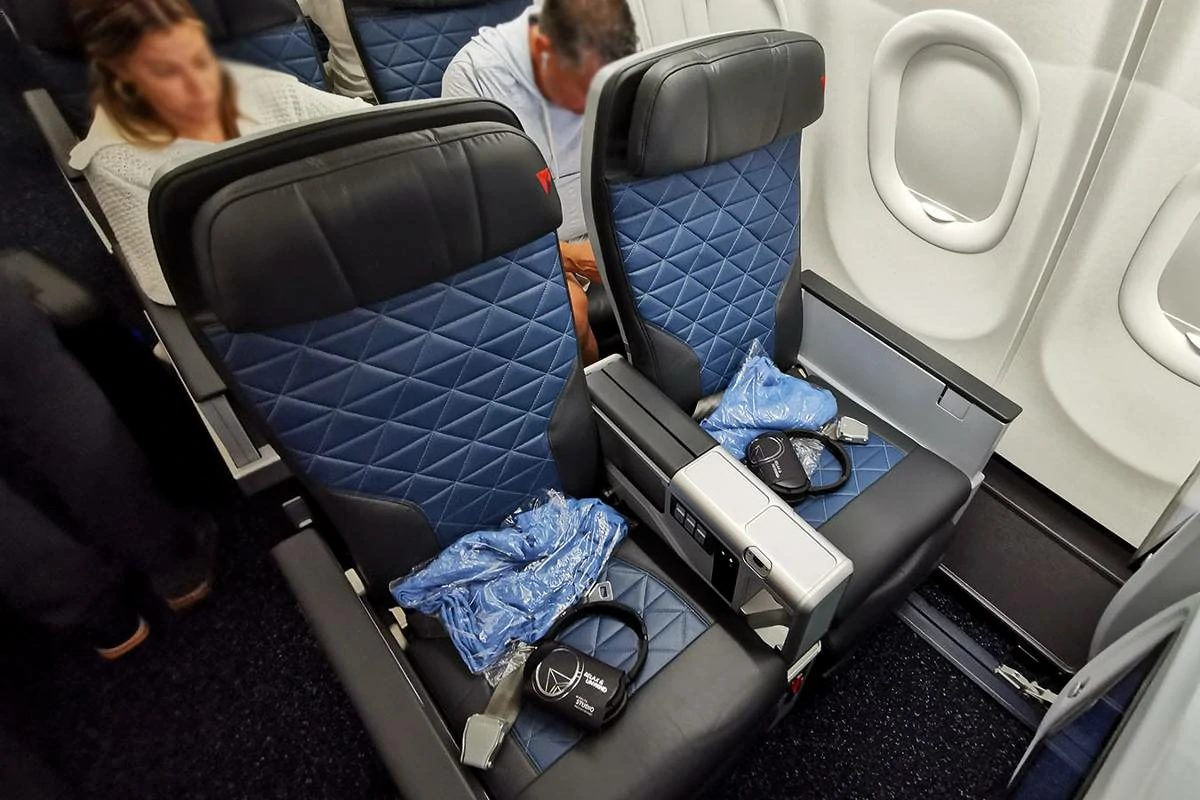
1. Basic Economy Comparison
Basic Economy is the most budget-friendly fare option for both American Airlines and Delta, but it comes with certain restrictions. Passengers typically cannot choose their seats in advance, make changes to their tickets, or bring full-sized carry-on bags. However, there are subtle differences between the two airlines’ offerings.
American Airlines’ Basic Economy allows passengers to earn AAdvantage miles and elite qualifying credits, while Delta’s Basic Economy does not offer these benefits.
Additionally, American Airlines may allow upgrades to Main Cabin or Main Cabin Extra for elite status members, while Delta does not offer such upgrades for Basic Economy fares.
2. Business Class Comparison
For travelers seeking a more luxurious experience, both American Airlines and Delta offer premium business class cabins with lie-flat seats, enhanced amenities, and priority services.
American Airlines’ Flagship Business features spacious seats that convert into fully flat beds, chef-inspired meals, premium wines and spirits, and access to Flagship Lounges. Delta One offers similar amenities, including lie-flat seats, gourmet dining, and access to Delta Sky Clubs.
The choice between the two often comes down to personal preference and specific route offerings. Some travelers prefer Delta One’s bedding and amenity kits, while others may favor American Airlines’ wider seats and larger entertainment screens.
3. Family Travel Comparison
Traveling with family can present unique challenges, and airlines have different policies and offerings to cater to families.
American Airlines offers family seating options, allowing families to sit together without paying extra fees. The airline also provides a dedicated family check-in area and priority boarding for families with young children.
Delta also prioritizes family seating and offers family-friendly amenities like children’s meals and activity kits. The airline’s SkyMiles program allows families to pool miles, making it easier to redeem awards for family trips.
Ultimately, the best airline for family travel depends on your specific needs and preferences. Consider factors like seat availability, baggage allowances, and in-flight entertainment options when making your decision.
4. International Travel Comparison
Both American Airlines and Delta operate extensive international networks, but their strengths lie in different regions.
American Airlines has a strong presence in Latin America and the Caribbean, offering numerous flights to destinations like Mexico, Brazil, and the Dominican Republic. The airline also has a growing network in Asia, with flights to major cities like Tokyo, Shanghai, and Hong Kong.
Delta’s international network is particularly strong in Europe, thanks to its partnerships with Air France-KLM and Virgin Atlantic. The airline offers numerous flights to popular European destinations like London, Paris, Amsterdam, and Rome. Delta also has a growing presence in Asia, with flights to cities like Tokyo, Seoul, and Beijing.
Making Your Decision
1. Identifying Your Priorities
Before choosing between American Airlines and Delta, it’s crucial to identify your personal priorities and preferences. Consider the following questions:
- What is most important to you? Is it on-time performance, customer service, in-flight amenities, fare prices, rewards programs, or route network?
- How often do you travel? Frequent flyers may benefit more from a generous rewards program and elite status perks.
- Where do you typically fly? Choose an airline with a strong network in the regions you frequently travel to.
- What is your budget? If cost is a major factor, compare fares and factor in potential baggage fees and other ancillary charges.
- Are you traveling with family or for business? Consider the specific needs of your travel companions and the amenities offered by each airline.
By reflecting on these questions, you can create a list of your priorities and weigh them against the strengths and weaknesses of each airline.
2. Weighing the Pros and Cons
Based on the head-to-head comparison in the previous section, you can create a list of pros and cons for each airline:
American Airlines
- Pros: Extensive route network, competitive fares (especially for domestic flights), generous rewards program, diverse fleet.
- Cons: Inconsistent customer service, lower on-time performance, less consistent in-flight experience.
Delta Air Lines
- Pros: Excellent customer service, superior on-time performance, consistent and high-quality in-flight experience, strong international network (especially to Europe).
- Cons: More expensive fares, complex fare structure, SkyMiles program devaluations.
3. Considering Your Budget and Travel Needs
Once you have weighed the pros and cons of each airline, it’s time to consider your budget and travel needs.
If you are a budget-conscious traveler who prioritizes low fares and doesn’t mind sacrificing some amenities or flexibility, American Airlines might be a good option.
However, if you are willing to pay a premium for exceptional customer service, reliability, and a consistent in-flight experience, Delta Air Lines might be a better choice.
Scott Keyes Expert Opinion
Scott Keyes, founder of Scott’s Cheap Flights, advises, “If you’re flexible with your travel dates and destinations, you can often find great deals on both American Airlines and Delta. However, if you have specific travel needs or preferences, it’s important to weigh the pros and cons of each airline carefully before making your decision.”
FAQs
What are the main differences between American Airlines and Delta?
The main differences between American Airlines and Delta lie in their customer service, reliability, in-flight experience, fare pricing, destinations, rewards programs, and co-branded credit cards. Delta is generally known for its superior customer service, reliability, and overall in-flight experience, while American Airlines typically offers lower fares and a more extensive domestic network.
Which airline has better customer service?
Delta is widely regarded as having better customer service than American Airlines. This is reflected in various customer satisfaction surveys and anecdotal evidence from passengers. Delta’s staff are often praised for their friendliness, helpfulness, and responsiveness to customer inquiries and complaints.
Which airline is more reliable?
Delta has a stronger track record of on-time performance and fewer cancellations compared to American Airlines. According to the Bureau of Transportation Statistics (BTS), Delta’s on-time arrival rate in 2023 was 81.16%, while American Airlines’ was 77.33%. Delta also had a lower cancellation rate of 0.61% compared to American Airlines’ 1.65%.
Which airline has better in-flight entertainment?
Both American Airlines and Delta offer a wide range of in-flight entertainment options, including movies, TV shows, music, and games. However, Delta’s selection is often considered to be more extensive and varied, with additional features like live TV on select flights.
Which airline has a better rewards program?
Both American Airlines’ AAdvantage and Delta’s SkyMiles are popular rewards programs with their own unique benefits. AAdvantage is known for its generous mileage accrual rates and extensive network of partners, while SkyMiles offers a variety of redemption options and the flexibility to use miles for flights, upgrades, and other travel-related expenses. The best program for you will depend on your individual travel habits and preferences.
The Bottom Line
Which Airline Is Best for You?
Choosing between American Airlines and Delta ultimately depends on your individual priorities and preferences. If you value exceptional customer service, reliability, and a consistently high-quality in-flight experience, Delta might be the better choice for you, even if it means paying slightly higher fares.
However, if you are looking for the most affordable option and prioritize a vast route network, American Airlines might be a better fit.
Consider your budget, travel needs, and the specific features that are most important to you when making your decision. Research both airlines thoroughly, compare fares and amenities, and read reviews from other travelers to get a better understanding of what to expect.
